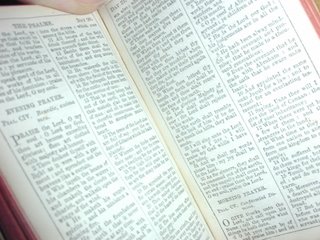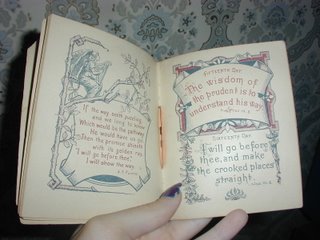The Deputy Headmistress posted some lesson plans (
here,
here) that she wrote for her girls to use with one of the
Draw Write Now books. I made up something similar for Ponytails to use this fall along with chapters from V.M. Hillyer's
A Child's History of the World. Like the DHM's guide, this is meant only to show what might be done; it includes books that we already had, and there are sure to be others that would be just as good for maps and pictures. (Usborne tends to show a bit more violence and unclothedness than I would sometimes like.)
So when I say "Read these pages in Usborne's
Ancient World," it isn't heavy reading at all; the Usborne books are heavily illustrated, with many double-page spreads; one page, for instance, might have a detailed drawing of a group of Egyptians having a party. I've tried to fit those pages in AFTER the reading on that subject in Hillyer's book, except where I thought the picture or map needed to be seen ahead of time.
The lessons here go only from the beginning of Hillyer's section on Mesopotamia. We read the chapters on Egypt too, but I started the "study guide" at about the time we were finishing them. She doesn't have a large timeline book to work in yet, so she is just adding drawings and occasional comments to a blank notebook as she goes along. We have a timeline in the kitchen and we're adding occasional sticky notes to it to mark events; Hillyer's dates for ancient history are sometimes questionable, but we'll stick with them for now.
One other thing is that we are using a reproduction of Hillyer's original book, which means that the pages and chapters in updated editions won't match exactly. The point of posting this is just to show the sort of thing that Ponytails is doing.
Extra books used:Usborne Book of World History (Update: One of the reviews on Amazon points out that World History is VERY choppy and sparse, and I agree; the reviewer says she prefers the Ancient World book, and I agree with that too! But we are still using this book here and there for pictures and bits of information.)
Usborne Ancient World
History Detectives: Ancient Greece
D’Aulaires’ Book of Greek Myths
The British Museum Timeline of the Ancient World
The Bible, Tanglewood Tales, and poems
MESOPOTAMIA (includes Sumer, Assyria and Babylonia)
Find a map showing the Tigris and Euphrates rivers (see Mom) and the Fertile Crescent.
Read Hillyer p. 42 and 43 (top), looking at the map
Read Ancient World p 6-7
Read World History p 8-9
Learn the ABC of Mesopotamia: Assyria, Babylonia, Chaldea. (Chaldea was part of Babylonia.)
Read the rest of p 43 & 44, and half of p 45.
Talk to Mom about Mesopotamia and the other names from the book.
What is a ziggurat? In your notebook, draw a Babylonian building.
Read the rest of the chapter (pages 45-48).
Read Ancient World p 8-9.
Read World History p 10-11, 12-13, 30-31.
Check the timeline in the kitchen to see how far back Mesopotamia goes.
Add anything else you like to the Mesopotamia and Babylonia page in your notebook.
Find Ur on a map (check with Mom).
Look at Ancient World page 28.
Mark the timeline: “Ur to Canaan, 1900 BC”
Read Hillyer pages 49-51
Divide a notebook page into three sections, and draw or write something about each section of this chapter.
Mark the timeline: “Canaan to Egypt, 1700 BC”
Read Ancient World p 38-39
Read Hillyer from the bottom of p 51 to the bottom of p 54.
What was the Exodus? Talk with Mom about who the Pharaoh was then. (Was it Rameses or someone else?) Talk about when this might have happened.
Mark the timeline: “Egypt back to Canaan.” Use the date that you discussed with Mom.
Finish the chapter (page 55).
Finish the notebook page for this chapter.
SOME STORIES FROM ANCIENT GREECEFind Greece on the globe.
Read Hillyer chapter 10, pages 56-61, about the names of some Greek gods.
Look up their pictures in the D’Aulaires’ book of Greek stories or in History Detectives pages 14-15.
Find Athens on a map of Greece.
Start a notebook page for this chapter.
Finish reading the chapter (p 61-63)
Finish the notebook page.
Read the chapter “A Fairy-tale War”, up to the bottom of page 67.
Use half a page in your notebook to show the Trojan War (maybe the wooden horse?)
Read the rest of the chapter, about Homer’s poems.
Find the picture of Homer on our timeline.
Read the story of Circe in Tanglewood Tales (with Mom).
Ask Mom for more information about Homer (who was he really?).
Use the other half of the notebook page for Homer.
BIBLE STORIES ARE REALRead Hillyer chapter 12, Kings of the Jews.
Ask Mom why the last paragraph of the chapter is no longer true.
Make a notebook page for the Temple, including the date.
PHOENICIANSRead pages 74 and 75, about the “Phenician alphabet.” Find out how we usually spell “Phenician” now.
Look at the Ancient World, pages 40-41. What were the Phoenicians famous for?
Read World History pages 50-51.
Read the rest of the Hillyer chapter.
Find Tyre and Sidon on a map (Ancient World page 41).
Make a notebook page for the Phoenicians.
ATHENS AND SPARTAFind Sparta on a map of Greece (Ancient World page 50 or World History page 67).
Read Hillyer chapter 14, pages 79-81.
Write in your notebook some ways that Lycurgus tried to make his people hard and strong. (Use half a page for Sparta.)
Read the rest of the chapter.
Use the other half of the notebook page for Athens.
Read chapter 15, about the first Olympics.
Read History Detectives pages 24-25. Look at the British Museum book, page 24.
Make a notebook page about the Olympics. Include the date.








